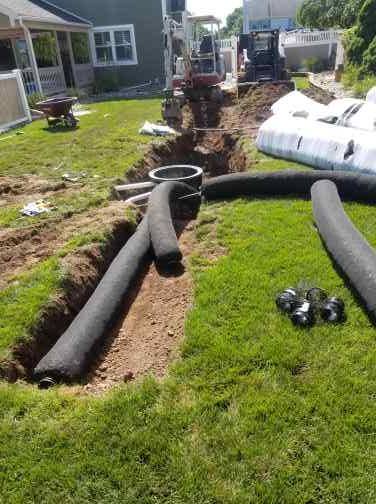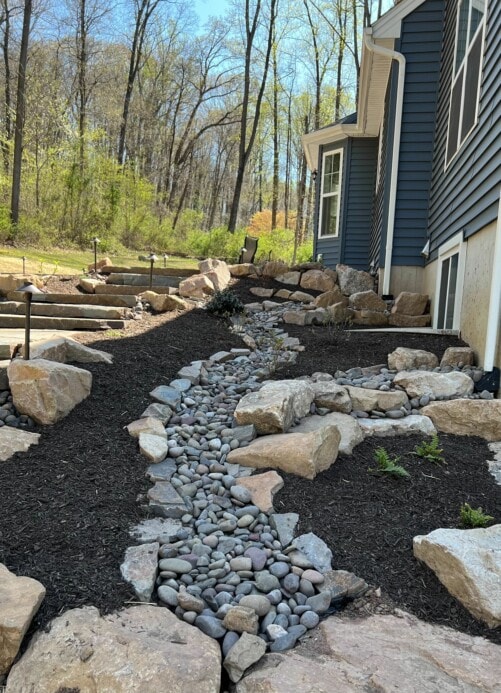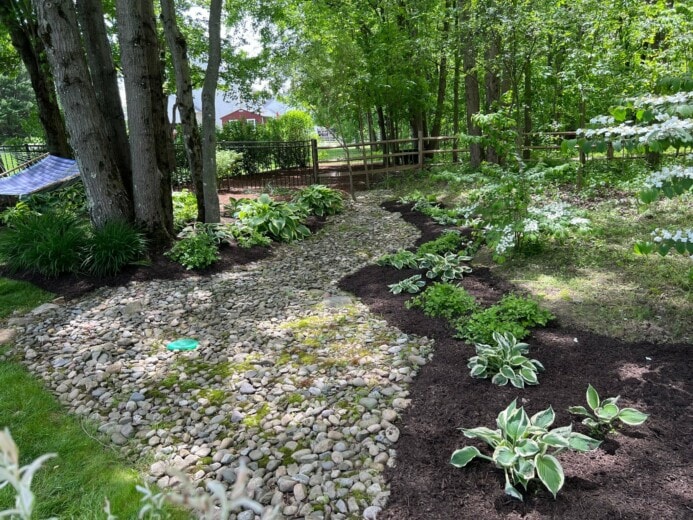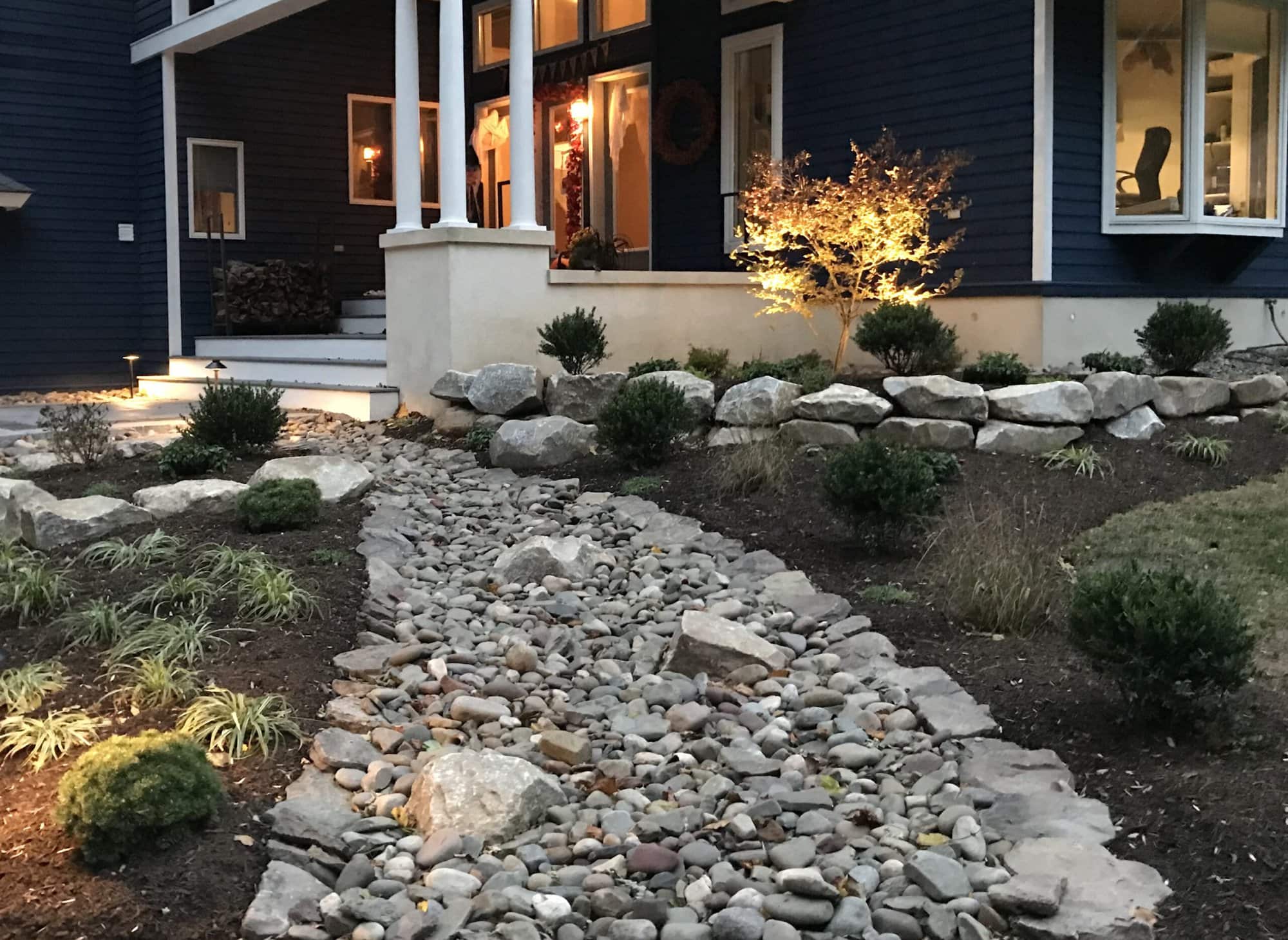There is no right answer to this question of whether a French drain or a dry creek bed is the best drainage option. However, understanding the difference between the two will help you determine which one may be best for resolving your drainage issues in the Pottstown, Chester Springs, Glenmoore, and the surrounding areas.

What is a French Drain?
A French drain is a functional and efficient solution in removing excess water from your property. It requires digging a trench and installing a gravel-lined pipe that carries water away from the home. Many French drains do not require an outlet as the water simply soaks into the soil as it travels long the perforated pipe. The trench is then covered with top soil and sod or seed. They are a solution for a flat terrain or if your yard slopes towards your property’s foundation.
It can be used to protect your foundation from underground or excess water, as well as protect the structure of a retaining wall and prevent your yard from becoming water logged.
The soil in the problem area is prone to frequent saturation from rain or flooding and the drain is completely hidden underground and not visible on the surface.

Dry Creek Bed, Pottstown, PA
What is a Dry Creek Bed?
A dry creek bed is designed to channel water away from your property in a visually appealing way. They help resolve drainage problems and reduce runoff in sloped terrain to prevent erosion.
A dry creek bed is essentially a shallow sloped trench that is used to disperse water that would normally puddle and stand a few days. They aren’t usually the best choice for flat ground. They are designed to mimic a meandering river bank and can become a stunning landscape feature adding a natural element to your landscape.
The area under the trench is lined with landscape fabric with varying size river rock filling the length of the bed. Sometimes plants are installed that integrate into the surrounding landscaping. It is most frequently dry unless it begins to rain but the beauty is that it looks good wet or dry.
In fact, some homeowners with no landscape drainage issue at all choose to install a dry creek bed because of their natural beauty and how well it can be incorporated into the landscaping.
A Common Drainage Problem that Plagues Homeowners
If your downspout is causing a muddy pool outside your house, a small dry creek bed can act as a run off block that create a path for the water and keeps your mulch or grass from washing away.
Cost to Build
Dry creek beds are usually more economical to install because there are fewer components and less labor in the installation process.

How to Choose
While both dry creek beds and French drains are designed to manage water on your property, there is a key difference in the systems. Dry creek beds are effective in reducing surface water and often used in landscaping while French drains are best for subsurface drainage problems with heavy rainwater needing to be diverted away from a foundation before it seeps into the basement.
It’s important to consult with a professional landscaping company to determine the best solution for your property.
Conclusion
Having a water drainage system is essential if you have excess rainwater in your yard. Drainage issues affect the usability and appearance of your property, as well as causing erosion, lawn and foundation issues. If you need a functional solution to manage an excess of underground water, a French drain may be the wisest choice. However, storm water runoff can often be managed by a dry creek bed with the advantage of getting an attractive landscape feature.

